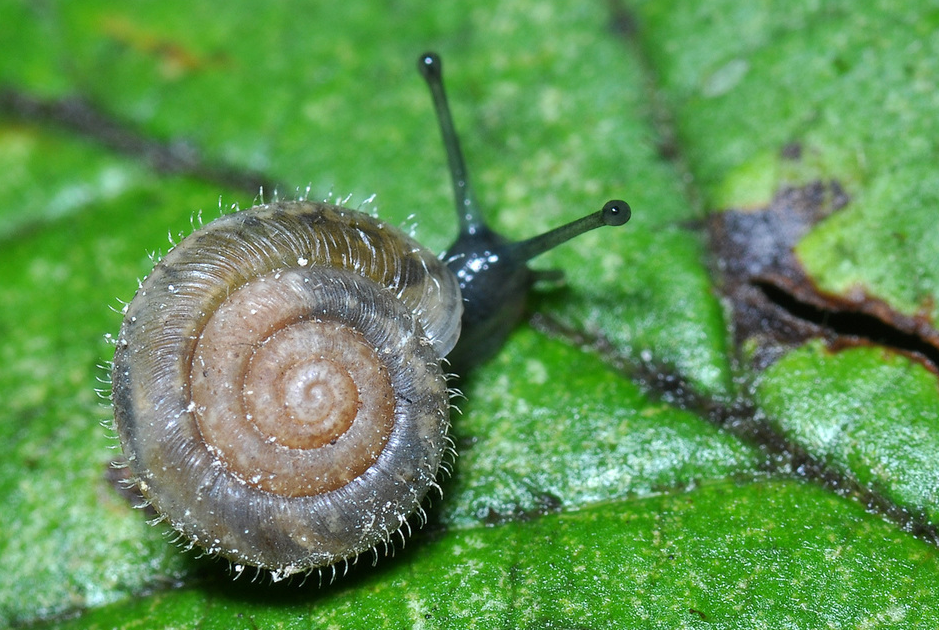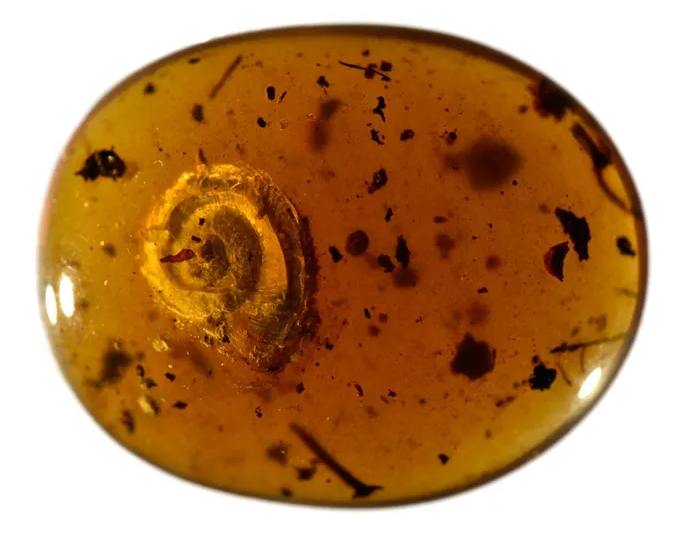This remarkable fossilized snail features a 9 millimeter long, 3.1 millimeter high shell, with lines of stiff, tiny hairs, each between 150 and 200 micrometers long. It was discovered in the Hukawng Valley of Myanmar.
Biologists are learning more about the evolution of one of the world’s slimiest species’ groovy hairstyles thanks to a snail preserved in amber with an undamaged fringe of tiny, sensitive bristles down its shell.
Adrienne Jochum, a paleontologist at the University of Bern, says that “”This is already the sixth species of hairy-shelled Cyclophoridae – a group of tropical land snails – found so far, embedded in Mesozoic amber, about 99 million years old.”
Additionally, they are not just some bizarre extinct creatures. Many land snails that are still alive today have fuzzy shells.
The newly discovered animal was given the scientific name Archaeocyclotus brevivillosus by a team of researchers led by malacologist Jean Michel Bichain from the Museum of Natural History and Ethnography in France. This name is a combination of the Latin words for small (brevis) and shaggy (villsus).
Six of the eight species of land snails identified in Myanmar amber had hairy shells, indicating that this may have been their original state. In fact, the researchers hypothesize that during the Mesozoic period 252 to 66 million years ago, this fuzz may have assisted snails in making the shift from a watery environment to life on land.
The periostracum, or skin of the snail’s shell’s outermost protein-filled layer, is where the hairs develop. These small prehistoric snails would have needed to expend energy to add hairs to their shells, so they must have had some type of selective advantage in their tropical habitat to make it worthwhile.



According to Bichain and his team, these may have included mechanisms for retaining water and preventing shell desiccation, enabling the animals to spread out into drier soil niches. Additionally, it’s probable that the shell’s fuzz assisted in thermoregulation just like our own mammalian hair does. (Thermoregulation is the ability of an organism to maintain its body temperature within certain limits, even when the ambient temperature is different.)
“The bristles could also have served as camouflage or protected the snail against a direct attack by stalking birds or soil predators,” said Jochum. “They may also have played a role in thermal regulation for the snail by allowing tiny water droplets to adhere to the shell, thereby serving as an ‘air conditioner’. And finally, it cannot be ruled out that the hairs provided an advantage in sexual selection.”
A remarkable window into the richness of the Cretaceous era, Myanmar amber has preserved over 2000 diverse species, ranging from delicate flowers to a superbly preserved feathered dinosaur tail, in addition to hairy snails.
Given that the warm, humid climate of the tropics is suitable for the breakdown and recycling of organic materials, it is difficult to find evidence of extinct species from the region. As a result, animals preserved in amber help to fill in some of the gaps in our knowledge of the past by revealing information about soft tissues and even the metallic hues of long extinct insects that would otherwise be lost to the ravages of time.
One such specimen preserved what may be the first evidence of live births in land snails (rather than egg laying), with the neonatal snails still bound to their mother by mucus.
Also as Science Alert pointed out, unfortunately, even though amber contains a variety of priceless, gorgeous specimens, commerce in fossils is currently financing violent conflicts in Myanmar. The researchers point out that the amber-encased snail specimen was legally acquired in 2017, before to the resumption of the current clashes.
